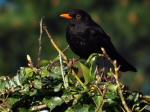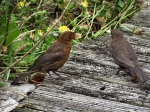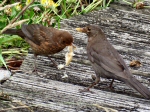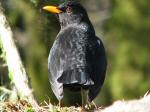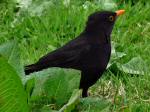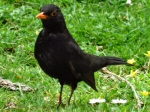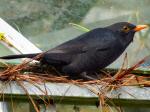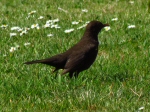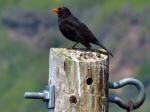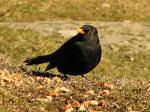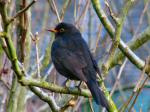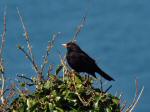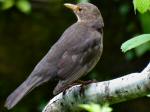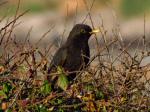Latin name - Turdus merula
A much loved bird with the glossy black plumage and the orange-yellow
bill and eye ring of the mature male making it easily recognisable. Originally
birds of woodland and heaths Blackbirds have easily adapted to farmland
and gardens becoming one of the commonest UK birds. They breed in woods
and gardens, building a neat, mud-lined, cup-shaped nest. The female is
brown with a yellow-brown bill with usually speckled under-parts and a
pale throat. Young birds are reddish-brown with paler spotting. They are
omnivorous, eating a wide range of insects, earthworms, berries, and fruits.
The song is rich, mellow and varied but the male stops singing after the
breeding season is over apart from quiet "singing to themselves"
whilst under cover. Depending on climate, the Blackbird may be resident,
partially migratory or fully migratory. The winter population in Great
Britain is two to three times the size of our breeding population due
to this migration. Strange to our modern tastes but the Blackbird, along
with other songbirds, were often caught for food and considered a delicacy
as in the old rhyme:
Sing a song of sixpence a pocket full of rye
Four-and-twenty Blackbirds baked in a pie
When the pie was opened the birds begin to sing
Oh wasn't that a dainty dish to set before the King
|
